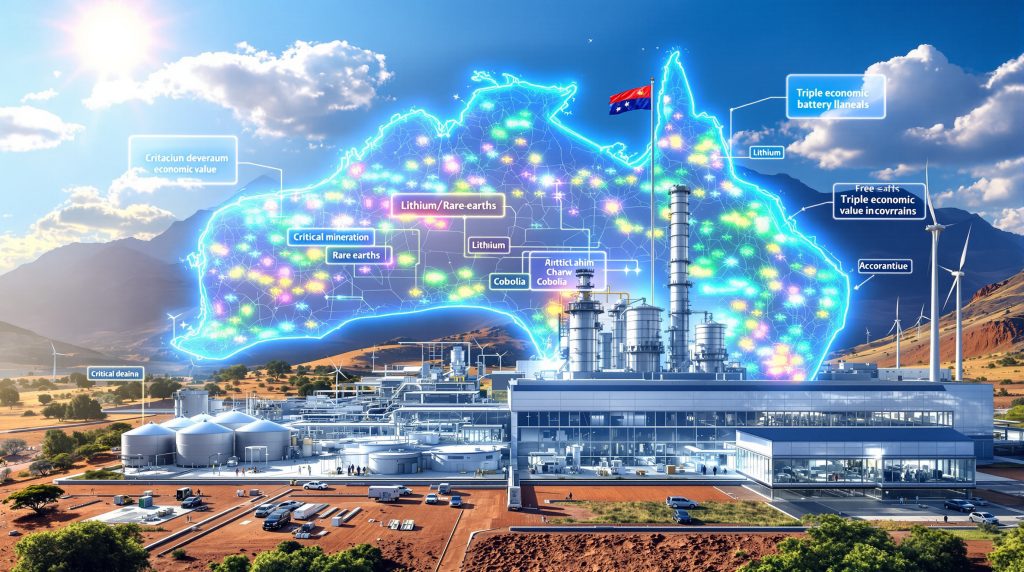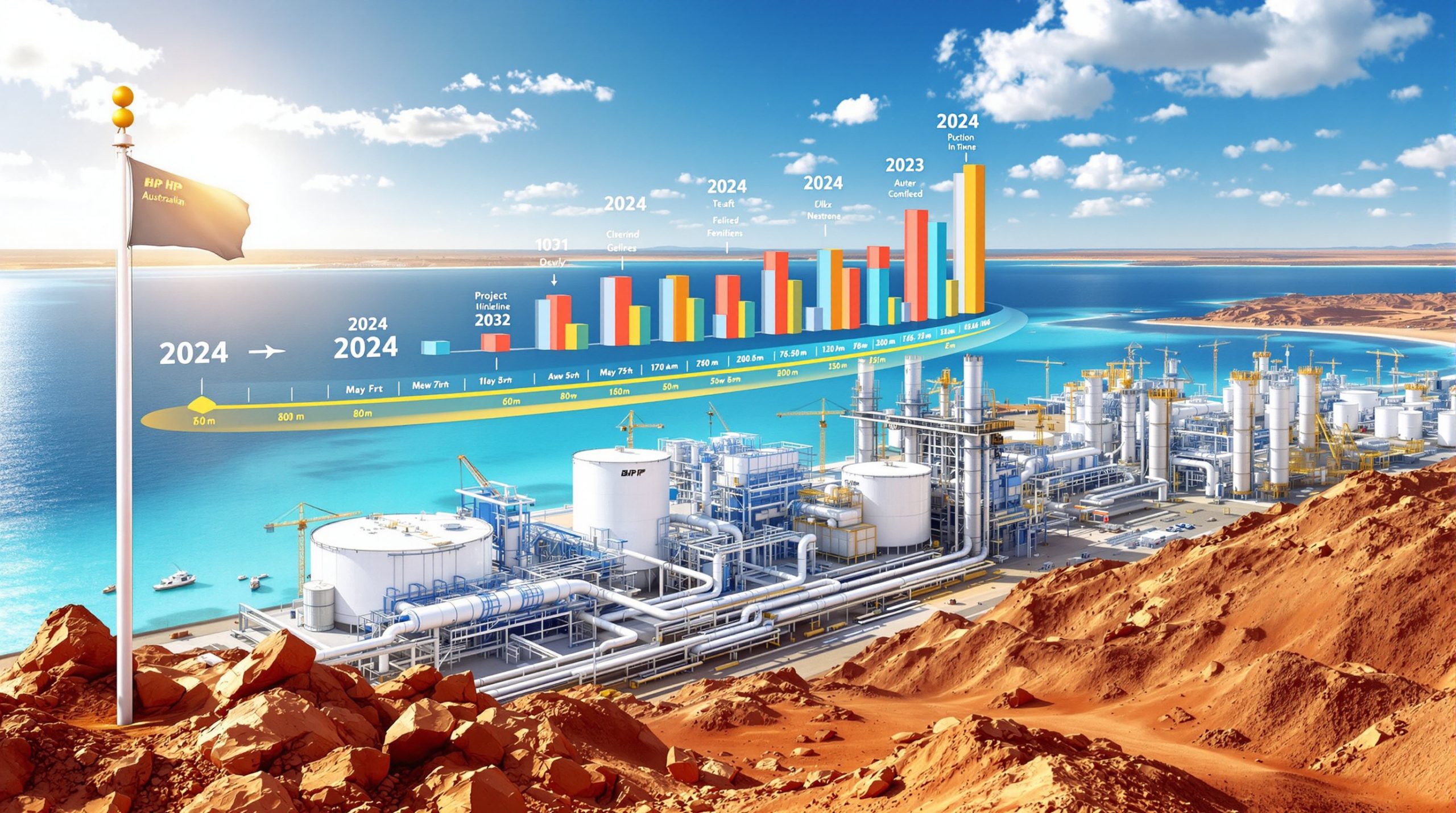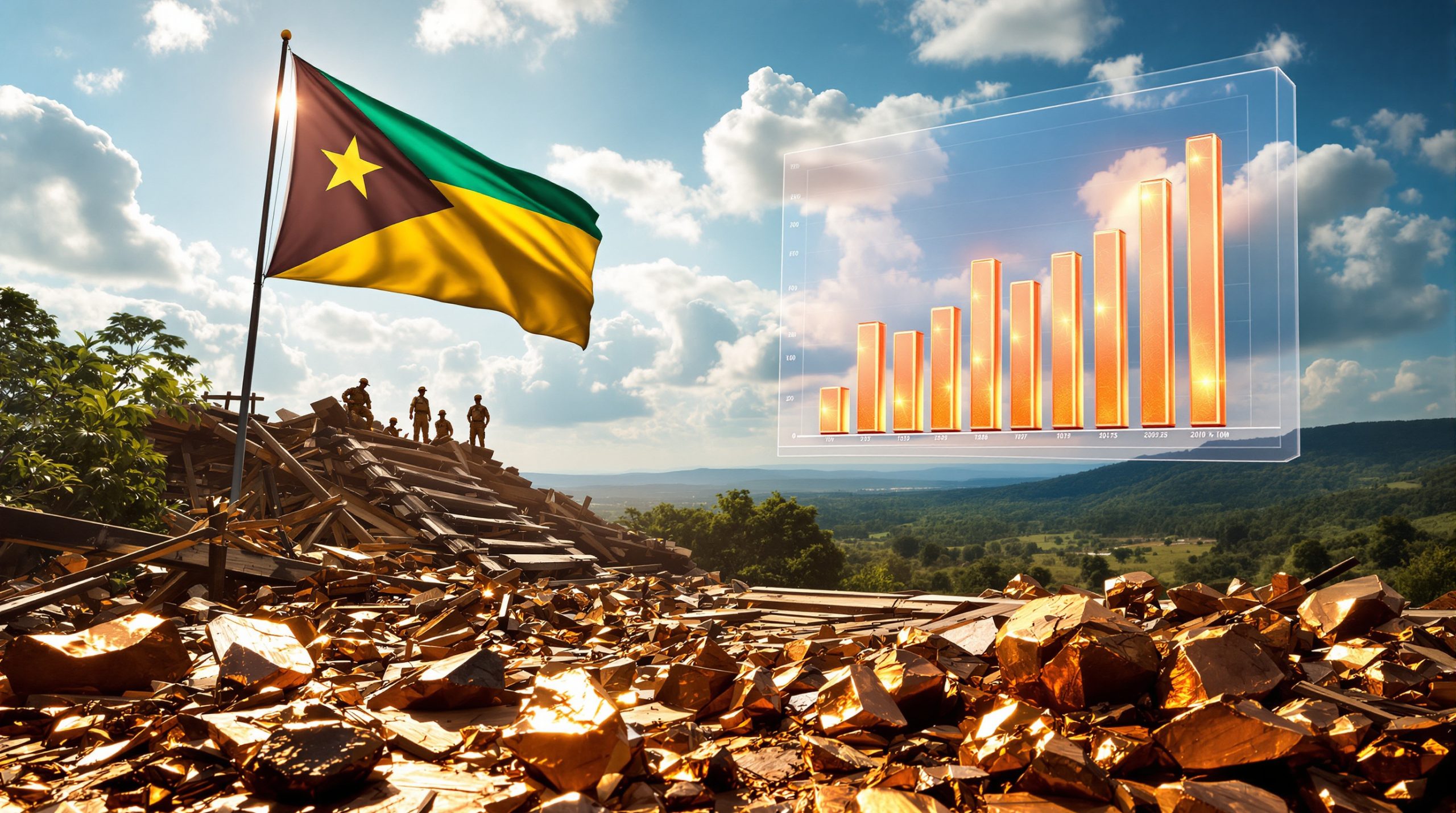Australia's Critical Minerals Processing Strategy: Building Sovereign Capability
Australia stands at a pivotal crossroads in its resources sector development. While the nation has historically excelled at extracting and exporting raw materials, the processing of critical minerals represents the next frontier for economic growth, sovereign capability, and global supply chain security.
Current State of Australia's Critical Minerals Industry
Australia possesses extraordinary geological wealth, particularly in minerals essential for the clean energy transition and advanced technologies. The country currently produces approximately 49% of global lithium supply and ranks among the top five global producers for cobalt, manganese, rare earths, rutile, tantalum, and zircon.
With established mining operations supported by robust environmental and safety regulations, Australia maintains significant untapped reserves across various critical mineral categories. This geological advantage positions the country uniquely in the global minerals landscape.
The Processing Gap Challenge
Despite Australia's mining strengths, a significant value-add opportunity remains largely untapped. According to industry experts, processing raw materials domestically could potentially triple their economic value compared to simple extraction and export.
The current reality presents several challenges:
- Limited value capture from raw material exports
- Minimal influence in global supply chains
- Fewer high-skilled technical jobs than processing would create
- Economic vulnerability to commodity price fluctuations
- Restricted technological development and IP generation
As Resources Minister Madeleine King highlighted in September 2025, "In Australia we've been mining them, but we haven't moved along that processing path." This acknowledgment points to a critical minerals strategy gap in Australia's resource strategy that the government is now actively addressing.
How Is Australia Positioning Itself in the Global Critical Minerals Landscape?
The global race for critical minerals processing capability has intensified, with nations recognizing these resources as strategically vital for energy transition and national security. Australia is strategically leveraging its natural advantages to establish itself as a key player.
Australia's Strategic Advantages
Australia brings several competitive advantages to critical minerals processing:
- Resource Security: Abundant, high-quality mineral deposits
- Political Stability: Reliable investment environment with strong governance
- Skilled Workforce: Mining expertise that can be transferred to processing
- Research Capabilities: World-class universities and research institutions
- Renewable Energy Access: Growing clean energy capacity to power processing
- Existing Infrastructure: Established mining regions with some infrastructure
Minister King emphasized this geological advantage in her recent statements, noting that "We have the geology above the ground rather than the seabed… and we've worked really hard over many years to build this industry." This recognition of Australia's terrestrial advantages underpins the national strategy.
International Partnerships and Frameworks
Australia is working to develop strategic partnerships with like-minded nations to accelerate processing capabilities. These include:
- Participation in international critical minerals frameworks
- Strategic economic dialogues with key trading partners
- Technology transfer arrangements with processing leaders
- Market access agreements for processed materials
- Joint research initiatives on processing innovations
The focus on international cooperation reflects the government's recognition that Australia cannot develop processing capabilities in isolation.
What Does Australia's Critical Minerals Processing Strategy Include?
The Australian government has developed a comprehensive approach to building processing capability through its Critical Minerals Strategy. Minister King confirmed in September 2025 that "the federal government is determined that Australia will have a critical minerals and rare earths mining and processing industry that can start to compete with China."
Key Strategic Pillars
Sovereign Processing Capability Development
A cornerstone of Australia's strategy is a substantial financial commitment to developing domestic processing capabilities. In September 2025, Minister King revealed:
- A $17 billion production tax credits program to incentivize domestic processing
- Development of a critical minerals strategic reserve mechanism
- Streamlined approval processes for processing facilities
- Co-investment in pilot and demonstration facilities
The minister noted that the government is "developing that right now and have had a number of really productive meetings with industry on the critical minerals strategic reserve, which is about how the government's investment vehicles can help lift the pricing of rare earths so that we are not all subject to that market manipulation."
Research and Innovation Focus
The strategy places strong emphasis on developing Australia's technological capabilities in mineral processing, including:
- Processing technology development priorities
- Sustainability improvements in extraction and processing
- Circular economy approaches to critical minerals
- Novel extraction and processing methods research
- Commercialization pathways for research breakthroughs
This focus recognizes that Australia must develop innovative approaches rather than simply replicating existing processing models.
Regional Development and Employment
Critical minerals processing presents significant opportunities for regional development, with the strategy including:
- Processing hubs in resource-rich regions
- Skills development programs for processing workforce
- Indigenous participation frameworks
- Community benefit-sharing mechanisms
- Regional infrastructure investments
Minister King highlighted the importance of these initiatives for "jobs and communities that support them," emphasizing the social dimension of critical minerals development.
What Critical Minerals Processing Projects Are Currently Underway?
Australia has begun establishing processing capabilities across several mineral categories, with varying degrees of development. While Minister King acknowledged that Australia is "a couple of decades behind" in processing capability, numerous initiatives are underway to close this gap.
Lithium Processing Developments
As the world's largest lithium producer, Australia is prioritizing the development of domestic lithium innovations and processing capabilities, including:
- Conversion of spodumene concentrate to lithium hydroxide
- Battery-grade lithium chemical production facilities
- Integrated mine-to-battery material projects
- Pilot plants for direct lithium extraction technologies
- Recycling facilities for lithium-ion batteries
These projects aim to move Australia up the value chain in the battery materials sector.
Rare Earths Processing Initiatives
Rare earth elements represent another priority area, with projects focused on:
- Separation and processing facilities for mixed rare earth concentrates
- Magnet manufacturing capabilities for high-performance applications
- Defense-focused rare earth element supply chains
- Research into environmentally improved separation techniques
- Collaborative international rare earth processing ventures
Minister King highlighted the importance of rare earths for "green technologies and also really important for defence applications," underlining their strategic significance.
Other Critical Minerals Processing Projects
Beyond lithium and rare earths, Australia is developing processing capabilities for:
- Cobalt sulfate production for battery applications
- High-purity manganese processing
- Vanadium extraction and processing for energy storage
- Nickel sulfate production for battery cathodes
- Graphite processing and anode material manufacturing
These diverse projects reflect the broad scope of Australia's critical minerals strategy.
What Environmental and Sustainability Considerations Apply to Processing?
Critical minerals processing presents both environmental challenges and opportunities for Australia to establish global leadership in green metals.
Environmental Challenges in Processing
Processing operations must address several key environmental considerations:
- Energy intensity of many processing methods
- Water usage requirements in water-stressed regions
- Chemical handling and waste management considerations
- Land use impacts of processing facilities
- Transportation and logistics emissions
Minister King's comments on environmental considerations reveal a careful approach. When discussing why Australia is prioritizing terrestrial mining over subsea exploration, she noted that "a number of concerns related to subsea mining and the lack of research on its effects on the environment remain." She added that "it feels like a really scary place for us to go when we already know what we can control environmentally and work with above ground, as we have done for so many years."
Sustainability Innovations
Australia's processing strategy emphasizes sustainability through:
- Renewable energy integration for processing operations
- Water recycling and efficiency technologies
- Waste valorization and by-product recovery
- Carbon capture and utilization in processing
- Traceability and sustainability certification systems
This focus on sustainability reflects both regulatory requirements and market demand for responsibly produced materials.
How Will Critical Minerals Processing Transform Australia's Economy?
The development of a robust critical minerals processing sector promises significant economic transformation beyond the immediate mining benefits.
Economic Impact Projections
Industry analysts project several key economic benefits:
- Value-added manufacturing growth in regional areas
- High-skilled job creation across the processing value chain
- Export diversification beyond raw materials
- Technology and IP development opportunities
- Supply chain resilience enhancement
As Minister King emphasized, Australia must "take up our responsibility to lead globally, because of those resources that our geology has gifted this country." This perspective highlights the economic opportunity presented by Australia's geological advantages.
Industry Development Opportunities
Beyond direct processing operations, the strategy is expected to catalyze development in:
- Advanced manufacturing capabilities
- Technical services and consulting expertise
- Equipment and technology development
- Specialized logistics and transportation services
- Research and development commercialization
These secondary and tertiary economic benefits could significantly expand the impact of critical minerals processing.
What Challenges Must Australia Overcome to Realize Its Processing Potential?
Despite clear opportunities, several significant challenges must be addressed to fully develop Australia's critical minerals processing capabilities. Minister King acknowledged this reality, noting that Australia is "a couple of decades behind here, so we've got to get moving."
Investment and Financing Challenges
Developing processing capabilities requires substantial capital, presenting challenges including:
- Capital-intensive nature of processing facilities
- Long payback periods for investments
- Competition for global investment capital
- Risk perceptions around new processing technologies
- Need for patient capital with strategic outlook
The government's $17 billion production tax credits program represents a significant step toward addressing these financing challenges.
Technical and Operational Hurdles
Technical challenges include:
- Scale-up challenges from pilot to commercial operations
- Energy and water access in remote locations
- Specialized workforce requirements
- Complex logistics for inputs and outputs
- Technology selection and optimization
Addressing these challenges requires coordinated efforts between government, industry, and research institutions.
Market and Competitive Factors
Market challenges include:
- Established processing centers in other countries
- Price volatility in critical minerals markets
- Evolving end-user specifications and requirements
- Geopolitical influences on supply chains
- Certification and compliance requirements
Minister King specifically highlighted market manipulation as a challenge, noting that the strategic reserve mechanism aims to ensure "we are not all subject to that market manipulation."
How Can Australia Compete with Established Global Processing Hubs?
To compete effectively with established processing centers, Australia must develop distinctive advantages beyond simply replicating existing models.
Differentiation Strategies
Key differentiation strategies include:
- ESG leadership through sustainable processing methods
- Integration of renewable energy for "green" processed materials
- Transparent and ethical supply chain certification
- Technical innovation in processing efficiency
- Strategic alliances with end-users in key markets
As Minister King stated, the government is "determined that Australia will have a critical minerals and rare earths mining and processing industry that can start to compete with China."
Policy and Support Mechanisms
Government initiatives to enhance competitiveness include:
- Tax incentives for processing investments
- Research and development support programs
- Skills development initiatives
- Infrastructure co-investment models
- Regulatory frameworks that balance development and protection
The strategic reserve mechanism represents an innovative approach to addressing market challenges, with Minister King explaining it as "how the government's investment vehicles can help lift the pricing of rare earths."
What Role Does Western Australia Play in the Critical Minerals Processing Strategy?
Western Australia represents the epicenter of Australia's critical minerals activity, with significant implications for processing development.
Western Australia's Strategic Position
Western Australia's advantages include:
- Hosting the majority of Australia's critical minerals projects
- Significant exploration expenditure concentration
- Established mining services ecosystem
- Growing processing infrastructure investments
- Research and development capabilities
The state's geological endowment makes it a natural focus for processing development.
Regional Processing Initiatives
Western Australia is developing several regional processing initiatives:
- Lithium processing valley development
- Rare earths processing hubs
- Battery materials manufacturing precincts
- Research centers focused on processing technologies
- Integrated supply chain development
These regional initiatives reflect the coordinated approach between federal and state governments, with Minister King recently leading "a meeting of federal, state and territory ministers on the topic of Australia's critical minerals industry."
FAQ: Critical Minerals Processing in Australia
What are critical minerals and why are they important?
Critical minerals are elements essential for modern technologies, renewable energy systems, and defense applications that face supply risks. They include lithium, rare earth elements, cobalt, graphite, and many others. These minerals are crucial for the clean energy transition, advanced manufacturing, and national security.
Why doesn't Australia already process more of its critical minerals?
Historically, Australia has focused on mining and exporting raw materials due to lower capital requirements, established markets for concentrates, and competition from countries with lower operating costs or established processing expertise. Building processing capability requires significant investment, specialized technical knowledge, and secure offtake arrangements.
How does critical minerals processing benefit regional communities?
Processing facilities create more diverse and higher-skilled employment opportunities than mining alone. They support regional development through infrastructure investments, skills development programs, and the growth of supporting service industries. Processing operations also typically have longer operational lifespans than mines.
What makes Australia's approach to critical minerals processing unique?
Australia combines abundant resource endowment with political stability, strong environmental and social governance, growing renewable energy capacity, and research excellence. The national strategy emphasizes not just processing capability but sustainable and ethical production that meets growing market demands for responsibly sourced materials.
Further Exploration
Australia's critical minerals strategy represents a significant national priority, as emphasized by Resources Minister Madeleine King when she confirmed the sector "remains a national priority for the government and the Future Made in Australia policy." By developing domestic processing capabilities, Australia aims to capture more value from its mineral endowment while contributing to global supply chain security for these strategically vital resources.
As Minister King concluded, Australia must move forward quickly to develop these capabilities, noting "we've got to take up our responsibility to lead globally, because of those resources that our geology has gifted this country." With substantial government investment and a comprehensive strategy, Australia is positioning itself to become a major player in the mining industry evolution.
Want to Capitalise on Australia's Next Major Mineral Discovery?
Discover investment opportunities in Australia's evolving critical minerals landscape before the market reacts by using Discovery Alert's proprietary Discovery IQ model for real-time notifications of significant ASX mineral discoveries. Explore our dedicated discoveries page to understand how major mineral discoveries can lead to exceptional returns for early investors.




